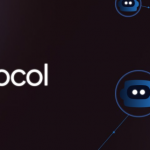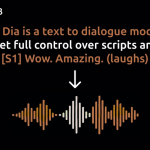
On April 17, Google announced on its developer blog that the Gemma 3 QAT version model is officially live! Optimized through Quantization-Aware Training (QAT), this open-source large model maintains high quality while significantly reducing memory requirements, making it easy to run even on consumer-grade GPUs. For example, the VRAM usage of Gemma 3 27B has been slashed from 54GB (BF16) to just 14.1GB (int4), allowing home-use GPUs like the NVIDIA RTX 3090 to handle it effortlessly! Developers on X went wild, exclaiming, “Google is putting AI into everyone’s computers!” Let’s break down how hardcore this tool really is.
QAT Technology: The “Black Magic” for Memory Reduction
The core of Gemma 3 QAT lies in quantization-aware training, a technique that pushes model “slimming” to the extreme while ensuring performance remains intact. Traditional Post-Training Quantization (PTQ) compresses after training, which often leads to precision loss. QAT, on the other hand, simulates low-precision operations (e.g., int4) during training, allowing the model to adapt from the start. Google’s approach is as follows:
- • Training Process: In the final ~5,000 training steps, the probabilities from the non-quantized model are used as targets, simulating int4 operations to ensure post-quantization quality is close to BF16.
- • Result: Using perplexity tests with llama.cpp, the QAT model showed a 54% reduction in perplexity under Q4_0 quantization, performing almost as well as half-precision (BF16)!
How dramatic is the memory reduction? Check out the data:
- • Gemma 3 27B: Reduced from 54GB (BF16) to 14.1GB (int4)
- • Gemma 3 12B: Shrunk from 24GB to 6.6GB
- • Gemma 3 4B: Cut from 8GB to 2.6GB
- • Gemma 3 1B: Dropped from 2GB to 0.5GB
The 27B model can now fit into a single RTX 3090 (24GB VRAM), and the 4B model can even run on smartphones! X user @vidxie exclaimed, “This memory reduction is truly a game-changer for AI democratization!”
Performance: Still Packs a Punch
Despite the reduced memory footprint, the performance remains impressive. In the Chatbot Arena Elo rankings, Gemma 3 27B-IT (instruction-tuned version) scored 1338 points, surpassing Llama 3 405B (1257 points) and Qwen2.5-70B (1257 points), trailing only OpenAI’s o3-mini. What makes it so powerful?
- • Multimodal Support: Handles text + image inputs (text-only for the 1B version), excelling at image analysis and short video comprehension, powered by the SigLIP vision encoder.
- • Ultra-Long Context: A 128K token window allows processing entire books or massive codebases in one go.
- • Multilingual Support: Supports over 140 languages, including Chinese, English, and Japanese, for seamless conversations.
- • Task Versatility: Strong in math, coding, and reasoning tasks. One X user tested it: “I asked it to write a Python web scraper—it delivered fast, accurate code with comments!”
Post-quantization performance remains nearly lossless. The QAT version, in int4 and Q4_0 formats, still competes evenly with half-precision models. Someone on Reddit said, “Compared to regular 4-bit quantization, this QAT feels like Q8 quality but uses only Q4 memory!”
How to Use It? Toolchain Fully Loaded
Google not only open-sourced the model but also collaborated with popular tools for instant usability. The QAT model (in int4 and Q4_0 formats) is available on Hugging Face and Kaggle, supporting:
- • Ollama: One-click operation—just type
ollama run gemma3:12b-it-qatto start chatting. - • LM Studio: Graphical interface—download the model and start using it, perfect for beginners.
- • MLX: Optimized for Apple Silicon, runs smoothly on M1/M2 MacBooks. X user @x2bab noted a 25% speed boost on M1 Max!
- • Gemma.cpp: A lightweight C++ inference engine that runs efficiently on CPUs.
- • llama.cpp: Supports GGUF format, compatible with various hardware, a favorite among developers.
Want to tinker yourself? Google released non-quantized checkpoints for further fine-tuning or quantization using tools like Hugging Face Transformers and Unsloth.
Project Links:
- • Hugging Face: https://huggingface.co/collections/google/gemma-3-qat-67ee61ccacbf2be4195c265b
- • Kaggle: https://www.kaggle.com/models/google/gemma-3
- • Blog Details: https://developers.googleblog.com/en/gemma-3-quantized-aware-trained-state-of-the-art-ai-to-consumer-gpus/
Google’s Gemma 3 QAT version leverages QAT technology to pack large models into consumer-grade hardware, cutting memory usage by a third without significant performance loss—truly an “open-source marvel.” This isn’t just a technical breakthrough; it’s a milestone for AI democratization—bringing AI from the cloud to local devices, from big tech to individuals, lowering the barrier so even students can play around with it. If Google optimizes KV caching and enhances visual support in the future, Gemma 3 could get even more traction.
Do you think this QAT version could become the standard for home AI setups? Or are there potential pitfalls to watch out for? Leave a comment and let’s discuss how big a splash this Google open-source move will make!
Reproduction without permission is prohibited:AI LAB » Google Gemma 3 QAT Version Released: Memory Reduced to 1/3, 27B Large Model Can Run on Consumer GPUs Too!







